

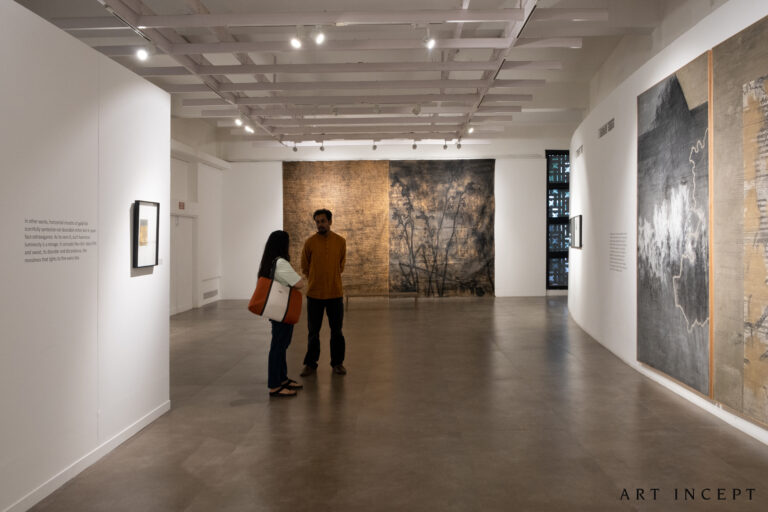
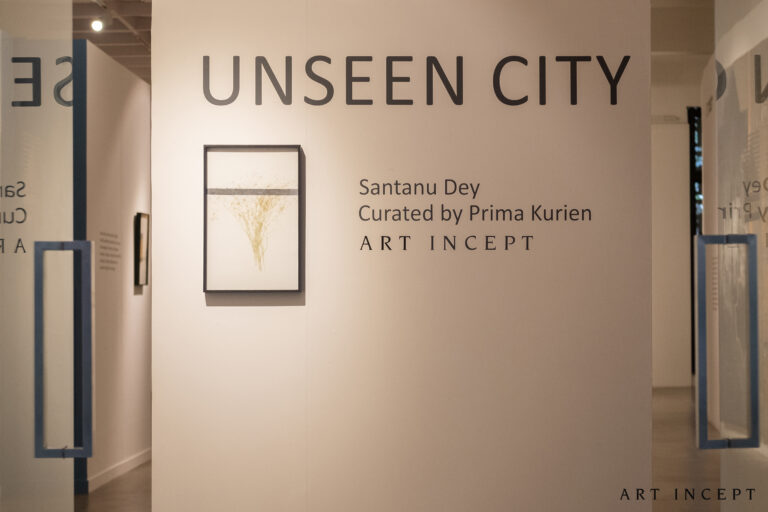
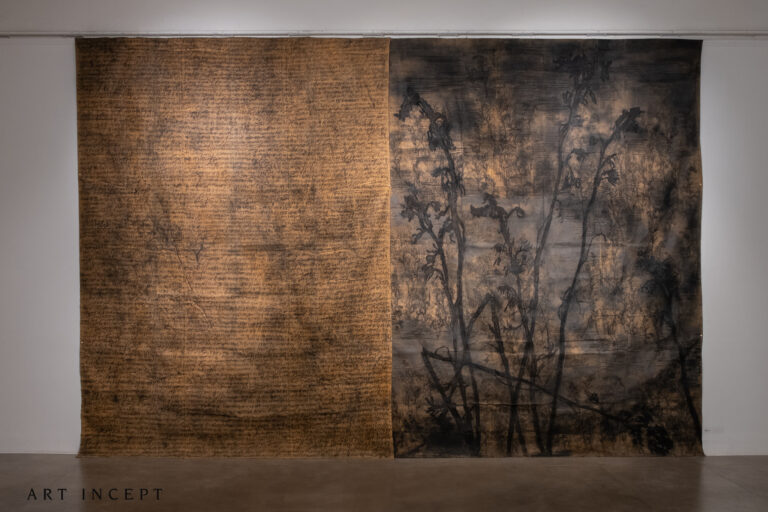

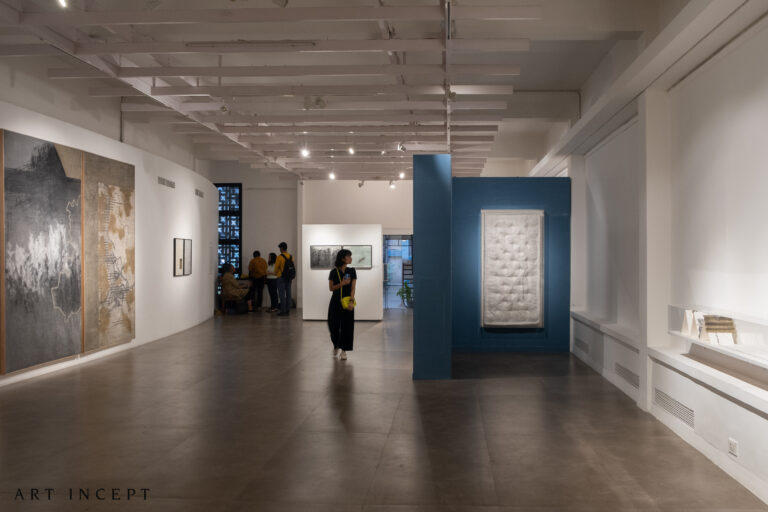
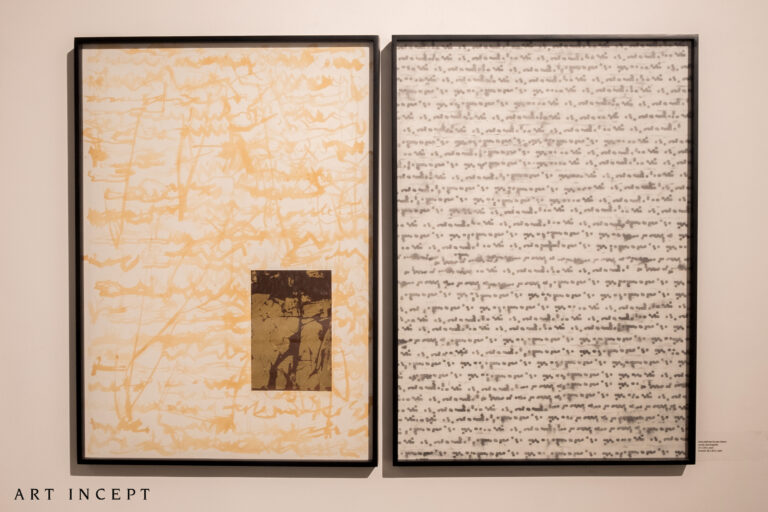


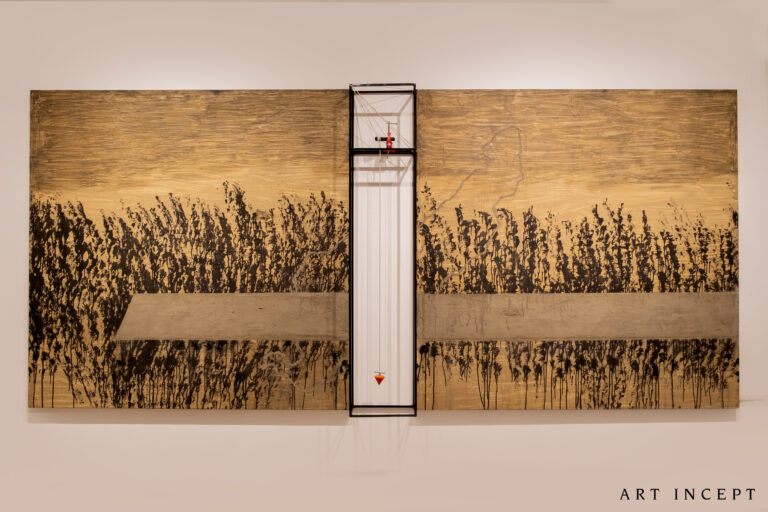
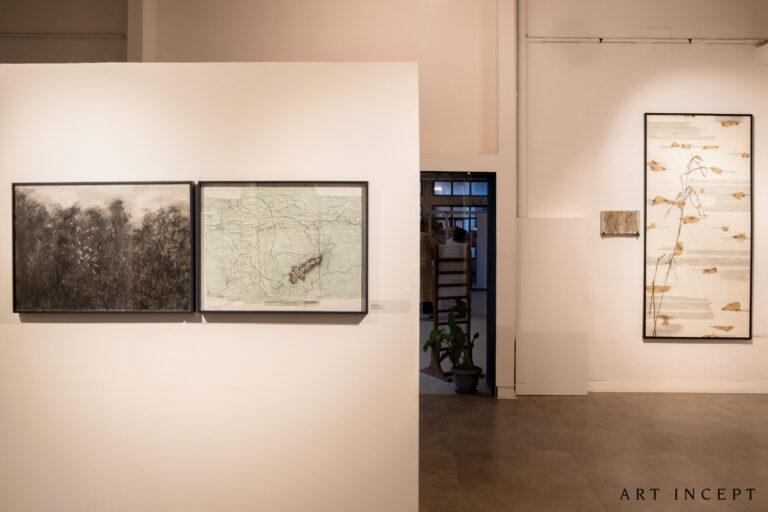
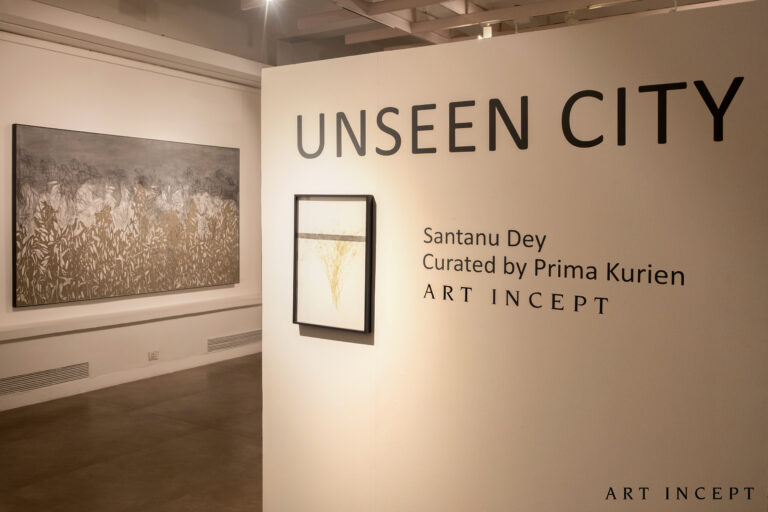

Outsider-Insider
Santanu Dey refers to himself as a triple migrant. From Calcutta to Baroda and then to Delhi, he is familiar with three cities. This has not caused him misery, but joyful discovery. His life, as his art reveals, was enriched, not restricted, with each transition. He grew up in Calcutta, studied art in Baroda and eventually, began working and living in Delhi. As he ‘breathed in’ each new location, he began to metabolize it in his mind, peel it off, slough it off its stereotypes and condense it into a place uniquely his own. Such realisations have driven him to become a spectator from the edges as an outsider-insider, always watching and commenting. His latest piece of art is more rebuke than ode to the metropolis.
Santanu adeptly anchors himself as the urban sutradhar, the narrator. To do this, he weaves his migrant-self with the use of scrolls. For the first, his ploy is using soft, white dhoti lengths. Dhotis are not as common as in cities as they once were. People wear them mostly for formal occasions. Who else can relate to a dhoti then, but a migrant who is reminded of someplace else?
Similarly, his nonsensical scrolls convey an urban buzz, evidence of being alive but not yet pounded into the melting pot. Santanu then assigns the role of cradling a scroll to these dhotis-the sort used by ancient story tellers. The dhoti scrolls in this series can therefore also be valued as self-portraits of him at work.
Botanical and industrial residues converse with him eloquently throughout. Santanu deploys carbon black from printing and photocopying machines in various works, combining it with fine line drawing. He forages for this material from neigbourhoods far from his home, asking facilities to keep them safely for him to collect. What seems to be a charcoal pencil in the hands of an artist are often particles of pollution, contained as a second life inside his work. In one of these, a beautiful river is interrupted by man-made effluents in an ink, foil and carbon shimmery sludgy. An emissions cloud erupts over the countryside. For Santanu, such materials are more than just an artist’s tool. They are a means to peel off and examine the ironic history of most major metropolises. In work after work, his use of discards memorialize the origin of cities as polluting industrial stretches, vital for production and economic growth. Chucks of these were eventually cannibalised and cleaned up for the newly emerging urbanites to flourish in. Gentrification drove industry to the edges since it was now seen as an urban contamination. Yet, as Santanu’s work so eloquently brings to the fore, effluence can be hidden, but it isn’t easy to abolish. The planet’s resources continue to be strained, for people shall consume.
Through visual cues, Santanu repeatedly emphasizes the idea of urban dystopia. Colour is his biggest tool- he barely uses any, stripping the landscape of an important attribute. He incorporates the materiality of the city into several pieces–by using archival printing ink and industrial paint, for example. His application of such atypical artistic materials is recognition of them as building blocks of any metropolis. By repeatedly using these in multiple ways, he imagines primacy for manufacturing again, a punchy re-think of drudgery and toil.
Santanu’s use of materials encodes urban faultlines. A small paper work employs ‘titch buttons’ strewn in a cluster at the bottom. These buttons are the mechanisms that connect two pieces of fabric, allowing them to form a whole. Yet, they are “synthetic,” as he refers to them, similar to lab diamonds. In other works, horizontal sheaths of gold foil scornfully symbolizes not desirable riches but in-your-face extravagance. As he sees it, such luxurious luminosity is a mirage. It conceals the city’s daily filth and sweat, it’s disorder and discordance, the messiness that lights its fire every day. It tramples the vegetal forms that spring to life, leaving behind their woody presence when their purpose is over. Through his work, Santanu recovers space and legitimacy for multiple histories. This is the essence of his work: devotedly constructing other ecospheres.
– Bharati Chaturvedi
